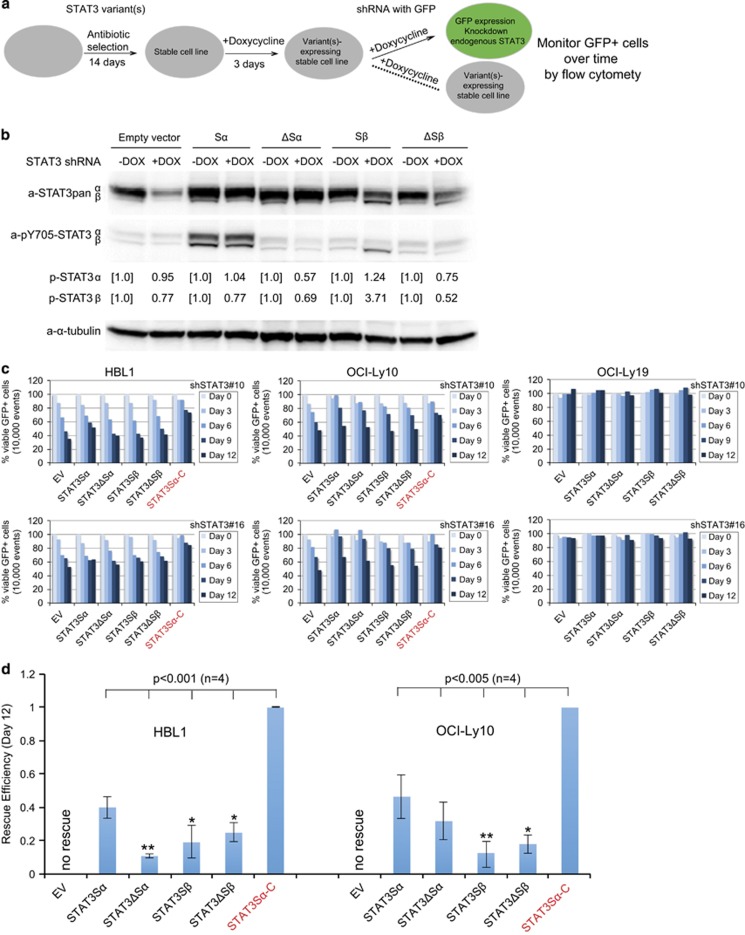Figure 3.
Rescue experiments using single STAT3 variants. (a) Workflow of knockdown/re-expression approach. Different stable cell lines were induced for expression of their individual STAT3 variants or EV control for 3 days before transduction with STAT3 shRNAs with the marker GFP. The shRNA-expressing GFP+ cells were monitored by flow cytometry over 12 days of observation. (b) Expression and activation of the single STAT3 variants in ABC DLBCL cells after knockdown of endogenous STAT3 by shRNA#16. OCI-Ly10 cells were manipulated as described in a, and shSTAT3 cells were selected with puromycin. After 5 days of selection, shSTAT3 was induced for expression for 4 days before immunoblotting with STAT3 or phospho-tyrosine 705 (pY705) antibody. Note that this monoclonal antibody did not recognize phospho-tyrosine 704 of STAT3ΔSα and ΔSβ. Expression of pY705 STAT3α or β relative to the uninduced control was quantified by densitometry. (c) Insufficient rescue by the individual variants. ABC DLBCL cell lines HBL1 and OCI-Ly10 and control GCB cell line OCI-Ly19 were used following the experimental procedure as described in a. The percentage of GFP+ cells expressing STAT3 shRNAs was normalized to that of the control shRNA at each time point. STAT3Sα-C expressing cells served as positive controls. The experiments were repeated twice with two different STAT3 shRNAs. (d) The rescue efficiencies of different STAT3 variant stable cell lines on day 12 were calculated by a formula: (% variant−% EV)/(% STAT3Sα-C−% EV). Error bars represent mean±s.d. (n=4, *P<0.05, **P<0.01, when compared with STAT3Sα).

